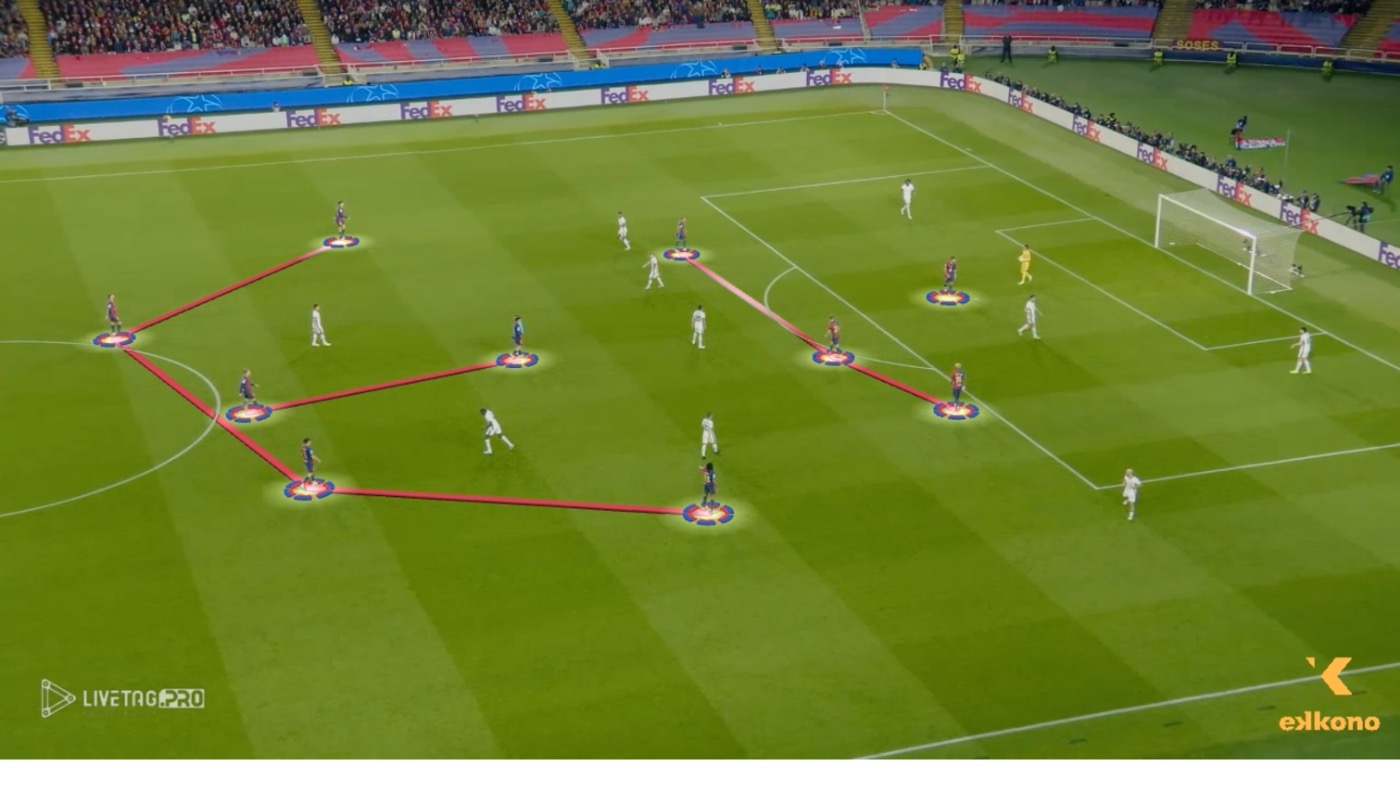
Introduction
The 4-2-3-1 formation is a flexible and widely adopted system in modern football, offering a balance between defensive solidity and offensive versatility. Structurally, it shares similarities with the 4-3-3 in terms of spatial organization and principles, but it tends to be more conservative, making it better suited to teams looking for added defensive security. The main distinction lies in the midfield configuration, with two holding midfielders and one advanced midfielder, rather than a single pivot. This adjustment allows for varied player profiles in key roles and greater adaptability to different match contexts.
Game Style
When analyzing the 4-2-3-1’s game style, it becomes clear why it remains a favorite at both elite and amateur levels. This system is particularly strong for associative play, offering numerous ways to create numerical superiority in inner spaces and along the flanks thanks to the structural presence of two fullbacks and two wingers. This allows teams to vary their attacking patterns between maintaining width, playing through central corridors, or combining in tight spaces.
Although it is not the most effective for pure direct play, it provides options through the presence of a central advanced midfielder (the “number 10”) who can link midfield and attack, and through wingers who can stretch the play or exploit 1v1 situations. The 4-2-3-1 also lends itself well to a percussion style, combining association with aggressive, direct movements and dribbles to disrupt the opposition’s block.
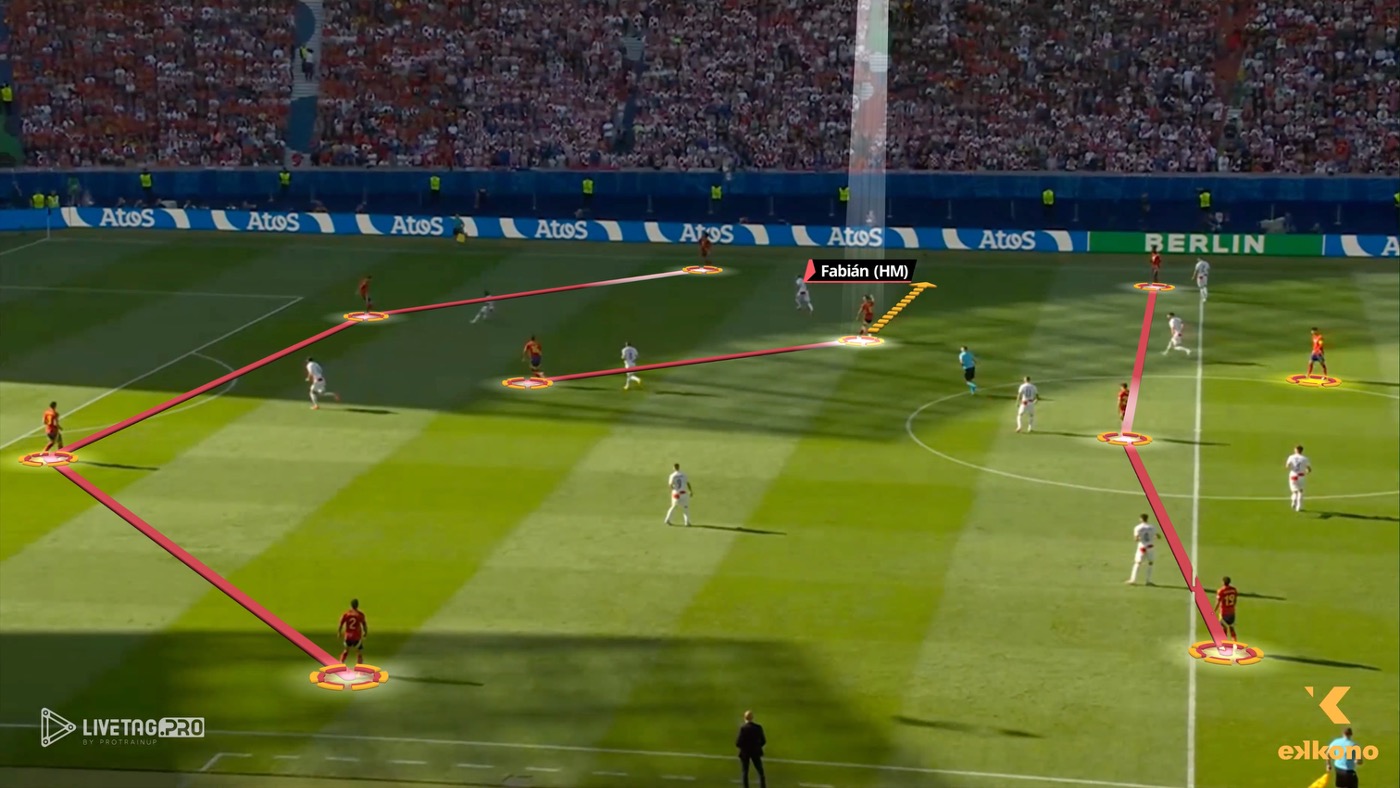
4-2-3-1 formation. Game style I
Player movement is key in the 4-2-3-1 formation. In this example, Spain uses Fabián Ruiz (HM) to move wide and receive the ball.
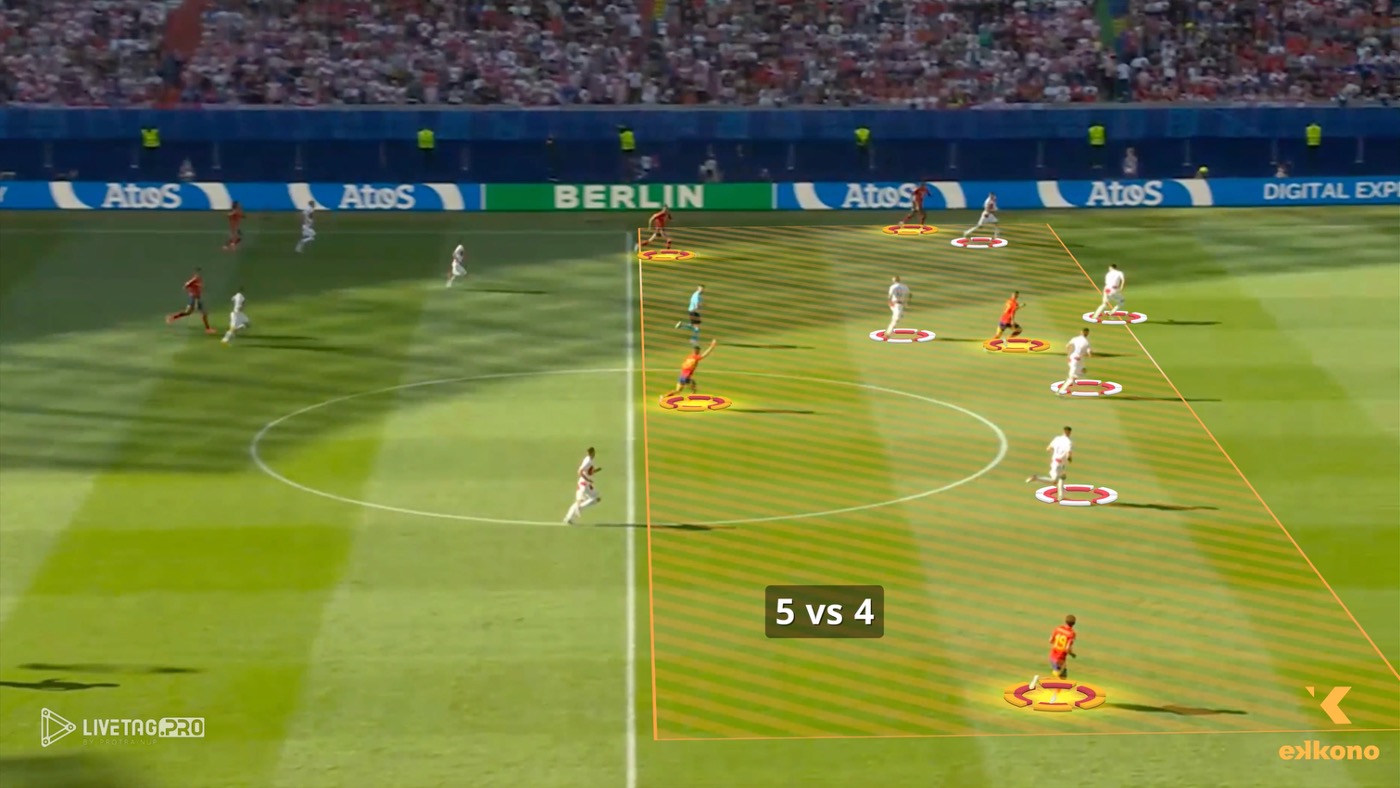
4-2-3-1 formation. Game style II
This helps Spain bypass the opponent’s pressure and create a numerical advantage against the back four.
Defensively, the system offers significant balance. It enables quick pressing after losing the ball, thanks to its compactness and numerical presence in central areas, while also being well-suited to dropping into an organized mid-block if immediate recovery is not possible. With three lines of defense and two players shielding the back four, it allows flexibility to either engage in duels or protect spaces zonally.
In terms of high pressing in the 4-2-3-1, this is also a good system to start pressing collectively as a block and then shift into duels and individual marking higher up the pitch, making it effective for disrupting the opponent’s buildup.
Finally, in transitions, the system supports building attacks as a block and maintaining structure while recovering, without leaving excessive spaces exposed.
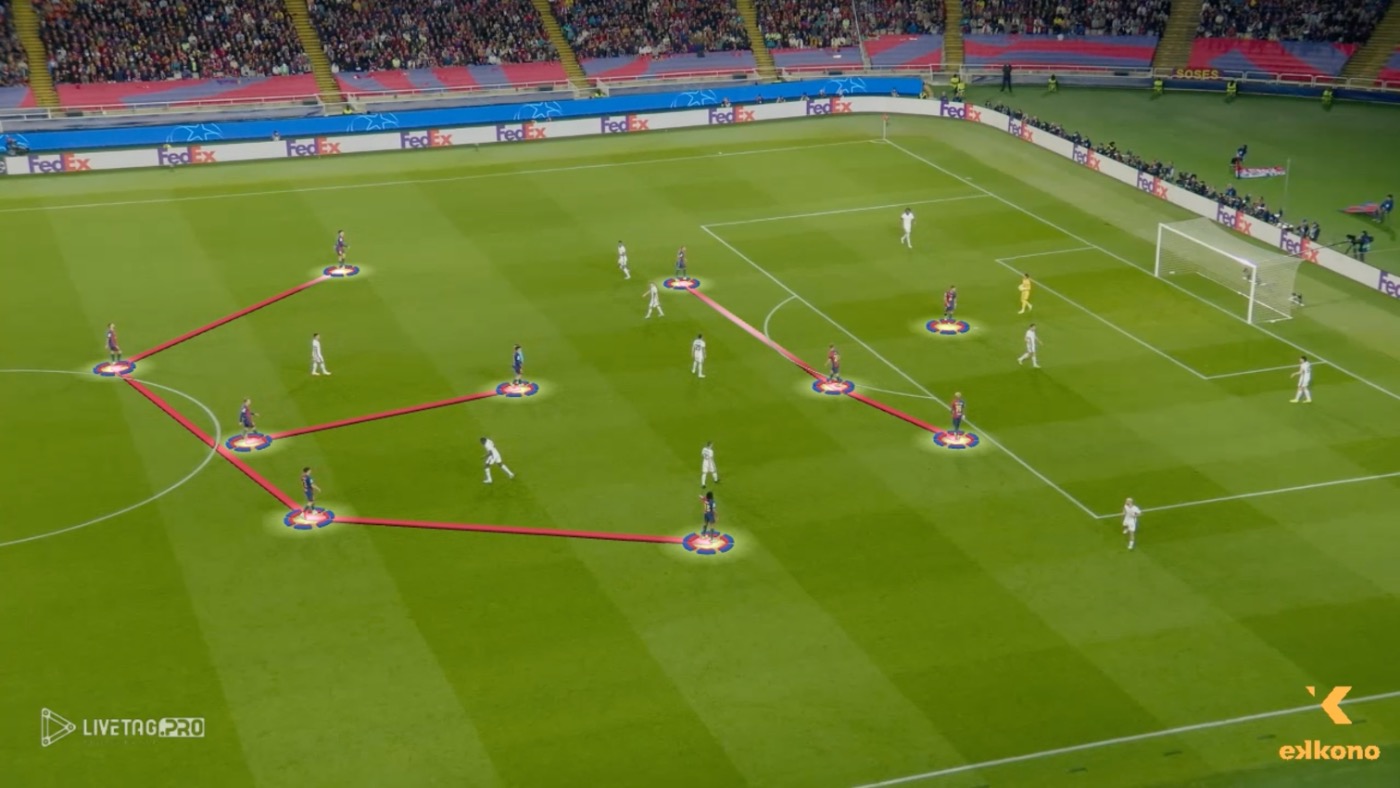
4-2-3-1 formation. High Pressing I
Barcelona applies high-block pressure in a 4-2-3-1 structure, starting from the opponent’s goal kick.
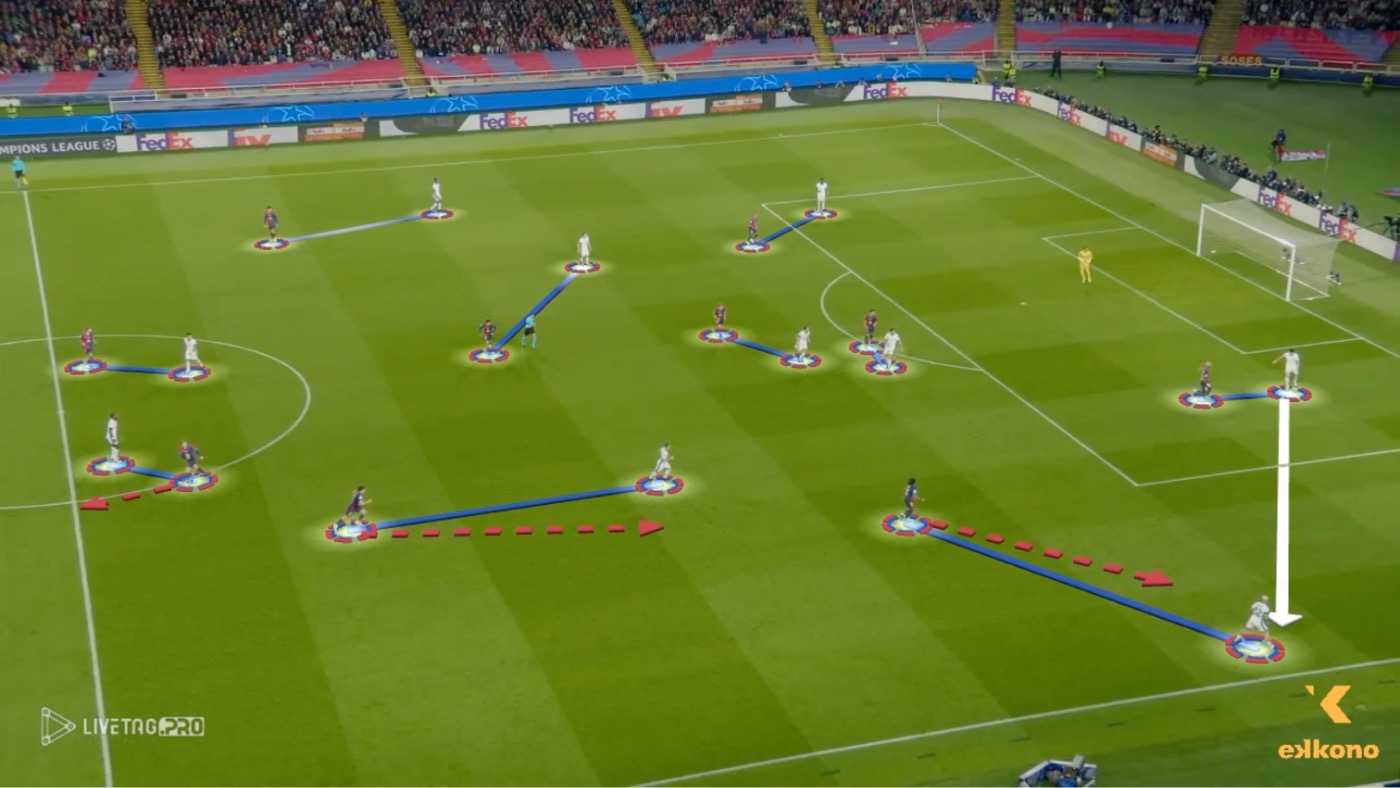
4-2-3-1 formation. High Pressing I
Once the goalkeeper plays the first pass, Barcelona switches to individual pressing through duels.
“THE 4-2-3-1 SYSTEM IS SIMILAR TO THE 4-3-3 IN ITS BASIC IDEA BUT IS OFTEN SLIGHTLY MORE SUITED TO A DEFENSIVE APPROACH.”
Advantages and Disadvantages of the 4-2-3-1
The advantages of the 4-2-3-1 are notable. It naturally enables a rational occupation of space, with three players positioned centrally to facilitate overloads in inner corridors. This structure allows teams to adapt their profiles in midfield and defense without requiring highly specialized individuals, making it accessible for squads with varied characteristics.
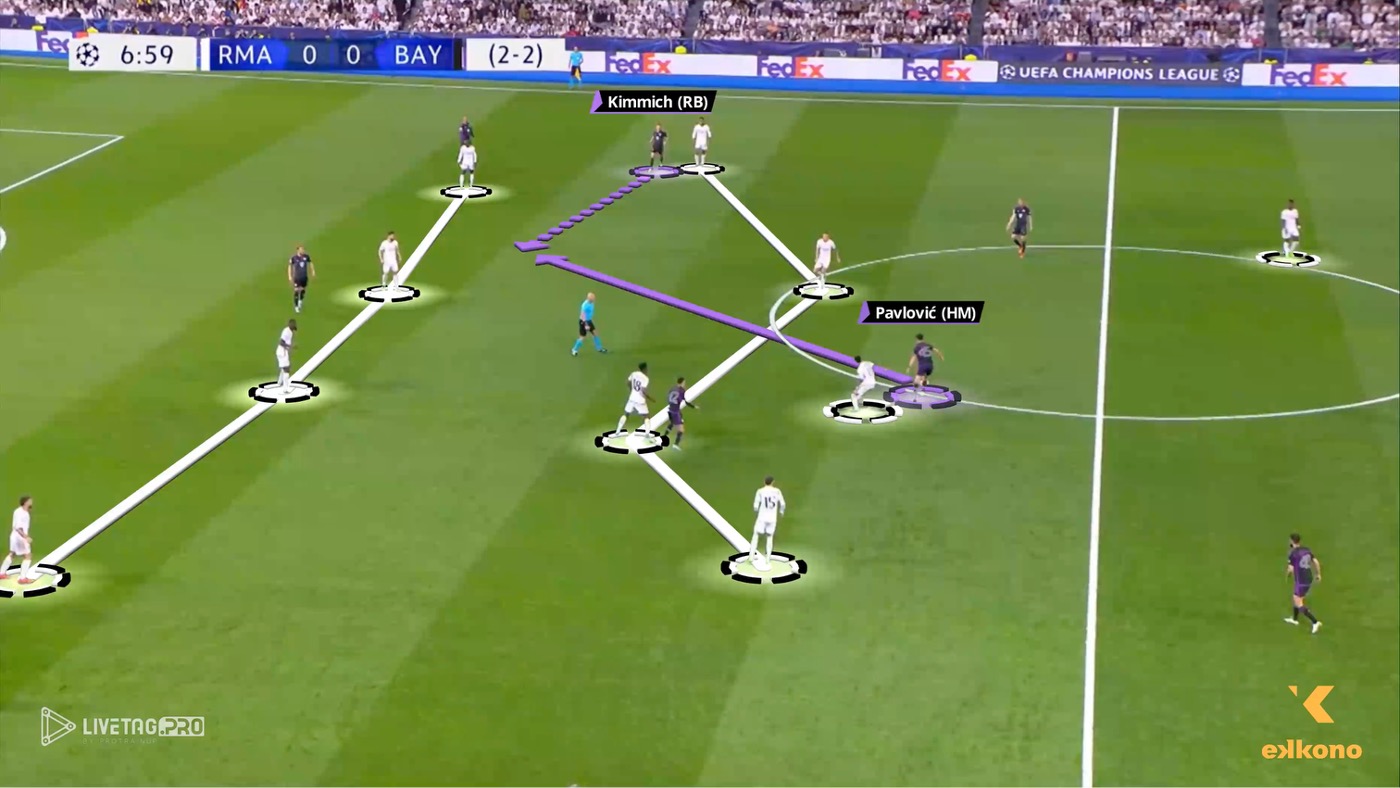
4-2-3-1 formation. The rational space occupation I
Here, Germany’s rational positioning allows Kimmich (RB) to find space between the lines and receive the ball.
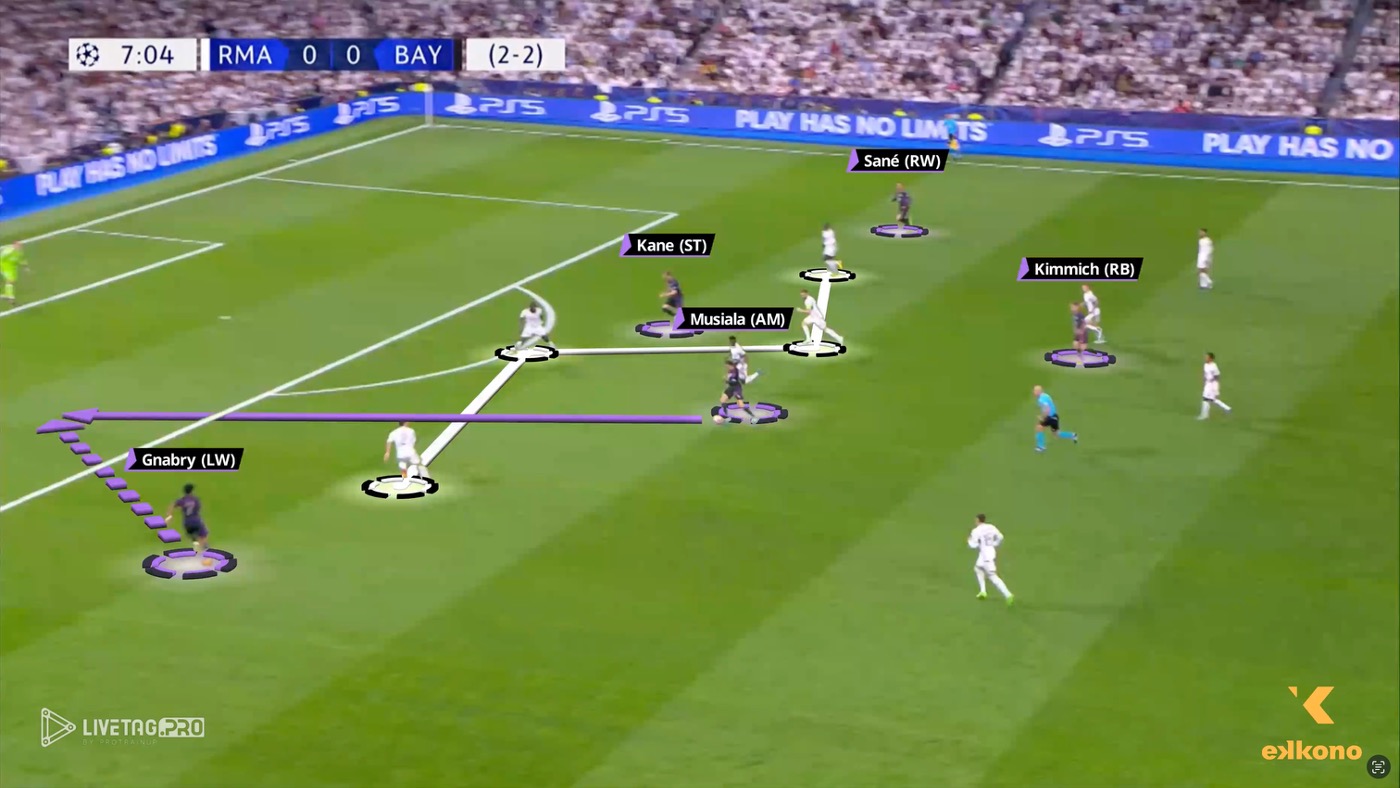
4-2-3-1 formation. The rational space occupation II
This creates a positional imbalance in the back line, opening channels to progress and finish the attack.
On the flip side, the system also has its limitations. With only one striker, it can lack presence in the box if the midfielders and wingers do not actively attack the box in crossing situations. Teams without dynamic players in advanced areas may struggle to create enough attacking options. Additionally, to build from the back calmly and create superiority in the first line, it often requires one of the midfielders to drop between the center backs, which demands positional awareness from the rest of players to rebalance the team offensively.
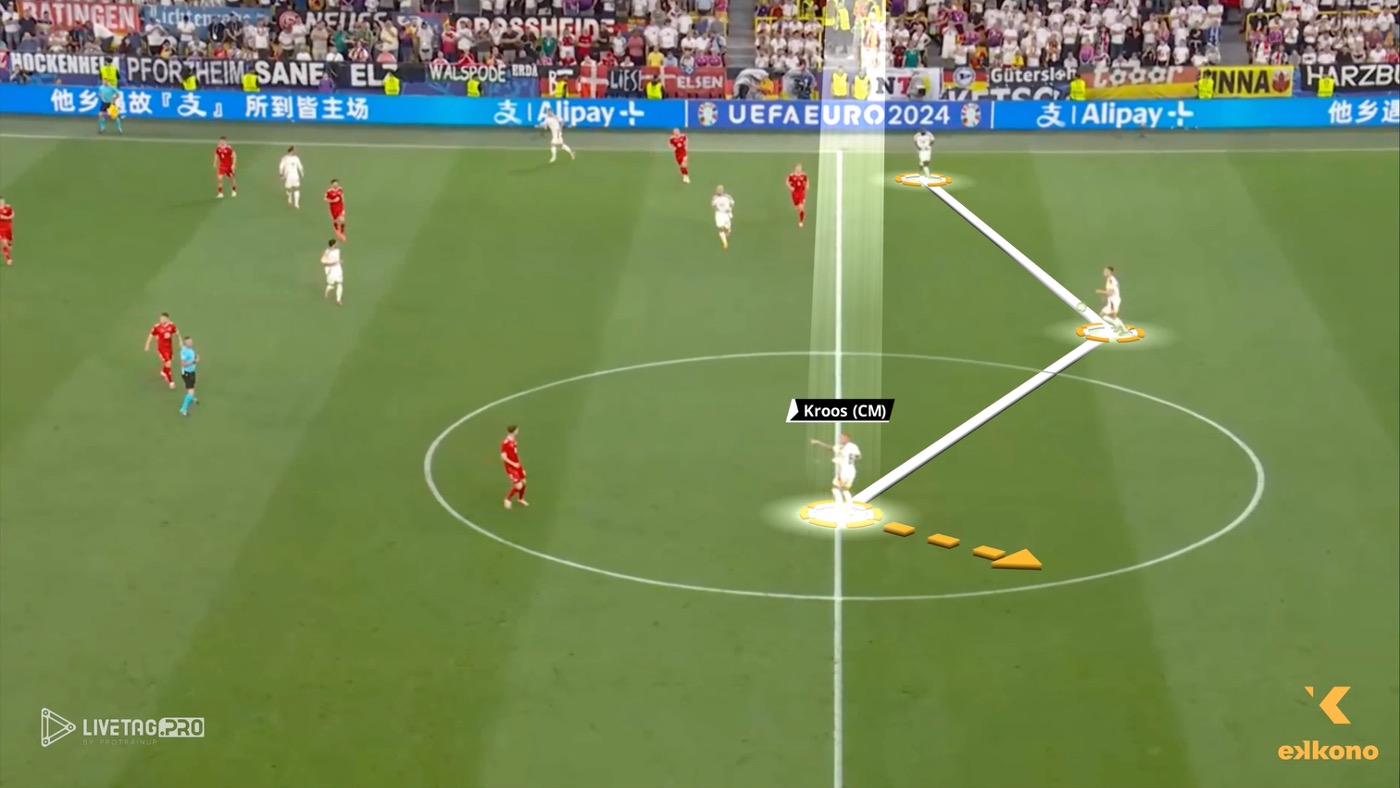
4-2-3-1 formation. Disadvantages I
Toni Kroos (CM) drops into the back line to form a temporary back three and secure numerical superiority in the build-up phase.
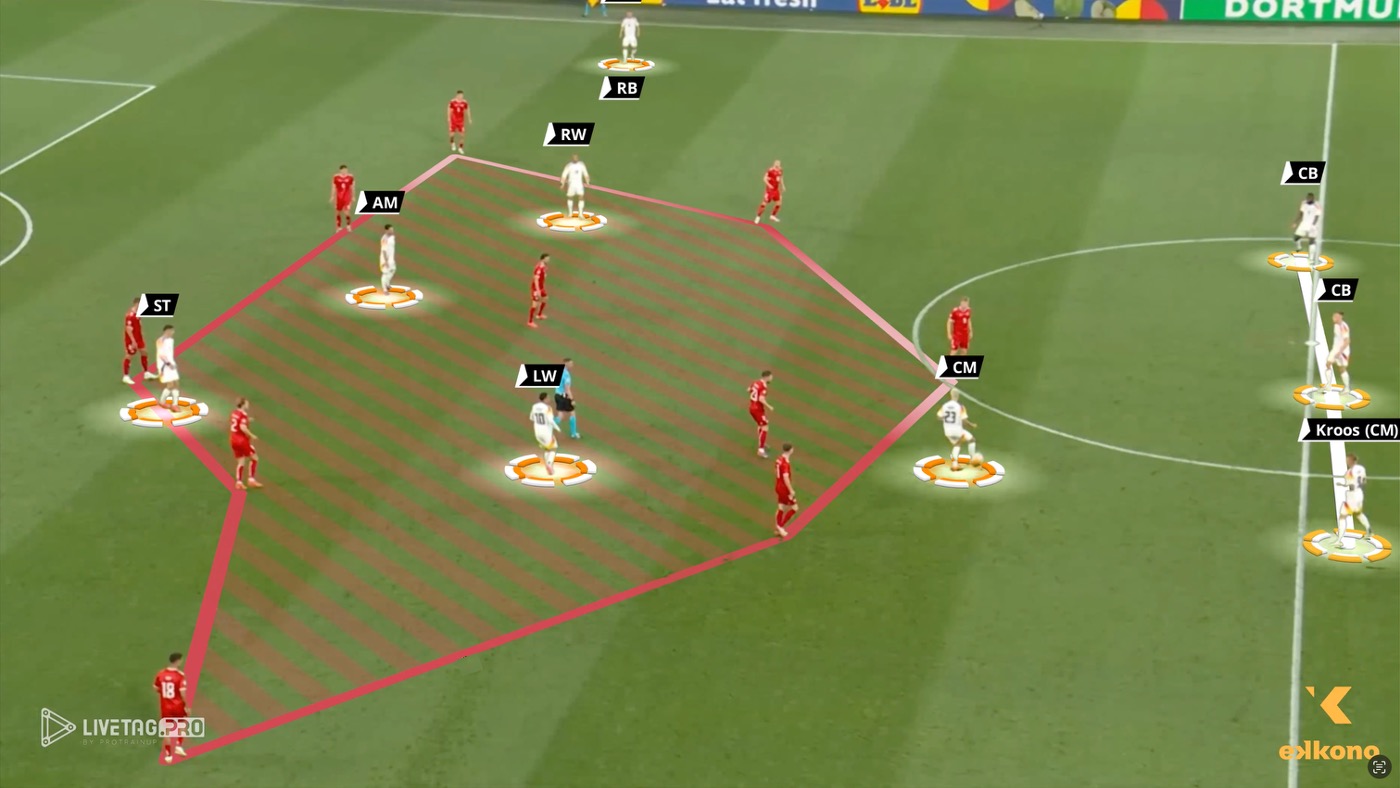
4-2-3-1 formation. Disadvantages I
Although Kroos drops deep to form a back three, the space is well rebalanced, ensuring numerical presence and stability inside the opponent’s block.
Required Player Profile
Holding Midfielders
The two holding midfielders are critical to the 4-2-3-1’s balance. They must combine dynamism to cover space and support transitions with the ability to drive the ball forward and contribute to associative play. Moreover, they should be capable of participating in the final third with accurate passing and mid-range shooting, helping to link phases of play and maintain the team’s offensive threat.
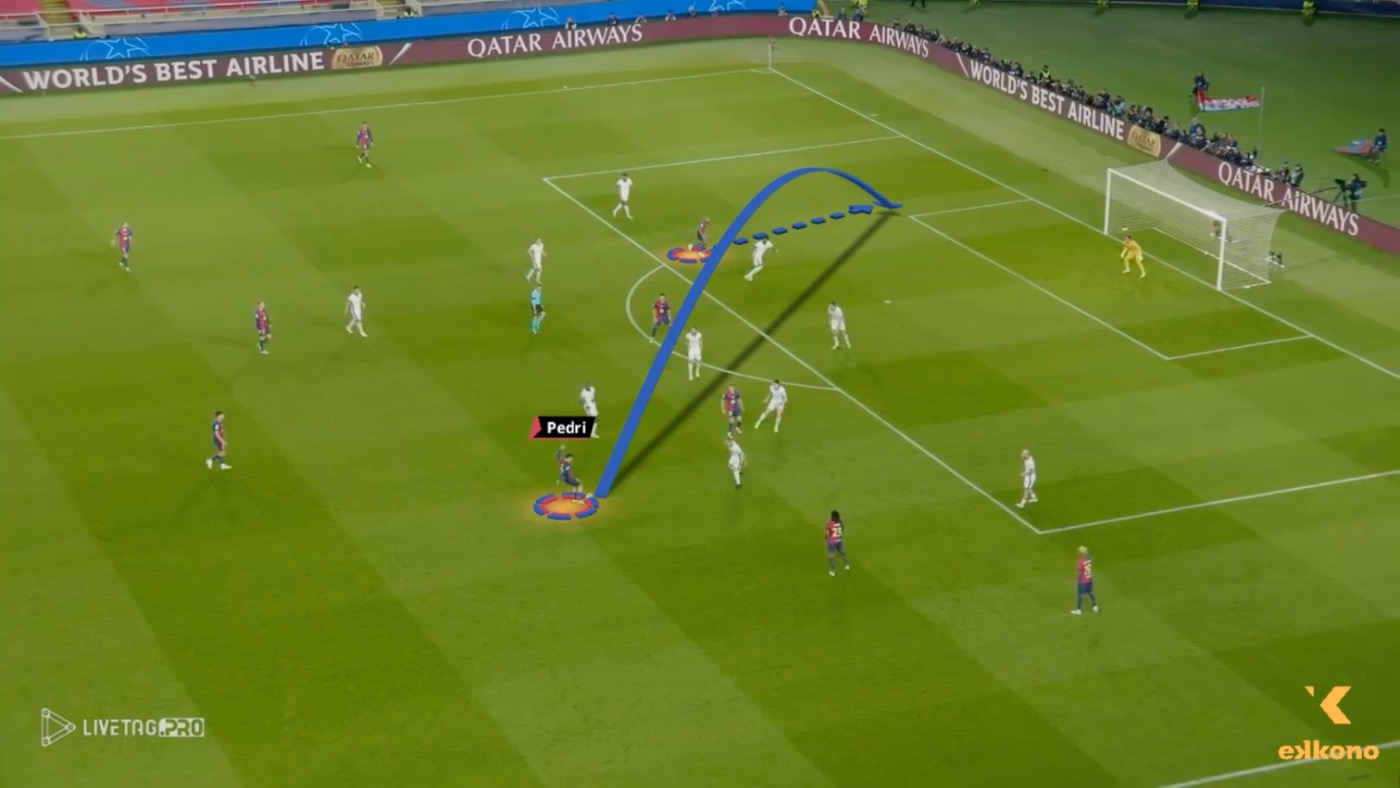
4-2-3-1 formation. Holding Midfielder profile
Pedri (CM) demonstrates the qualities of a modern holding midfielder by delivering a precise long pass to Raphinha.
Wingers
Wingers in this system must provide both width and penetration. They can offer either the ability to excel in 1v1 situations or the capacity to repeatedly attack space behind the defensive line. Additionally, strong crossing ability is important, given the presence of a single striker who relies on service from wide areas and midfield runners to generate chances.
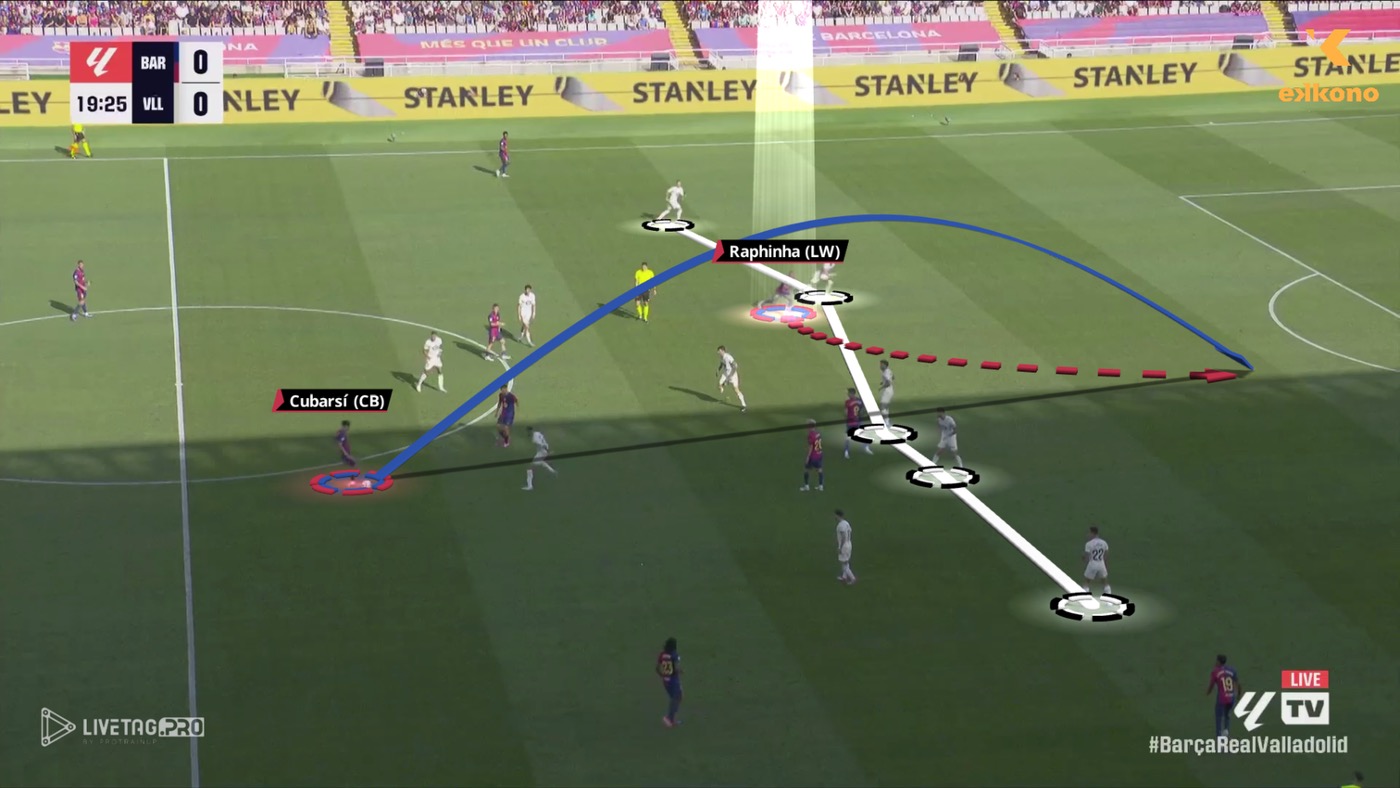
4-2-3-1 formation. Winger profile I
Raphinha (LW) exploits the center-back’s focus on Lewandowski (ST) with an unmarking run into free space.
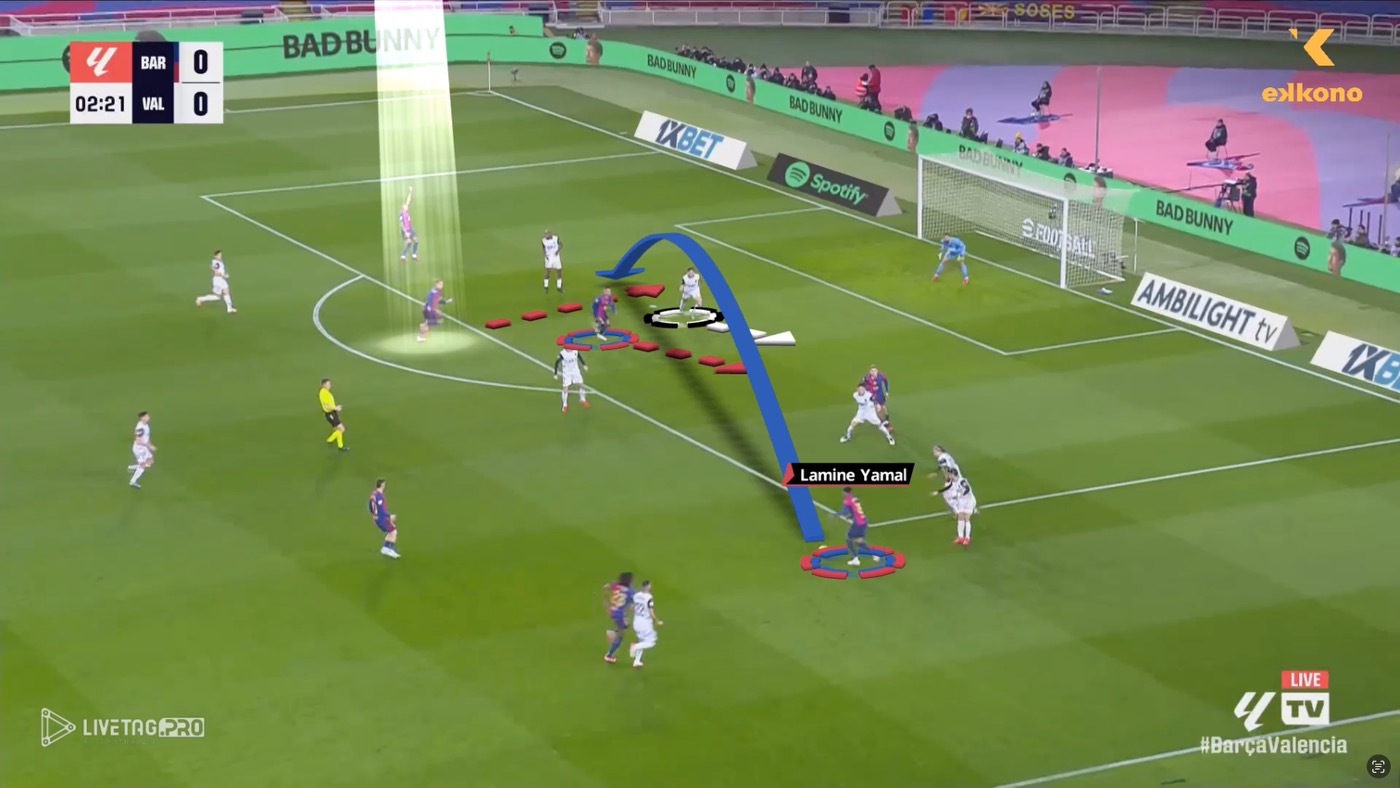
4-2-3-1 formation. Winger profile II
In addition to his outstanding 1v1 skills, Lamine Yamal (RW) delivers high-quality crosses, adding unpredictability to his game.
Conclusion
The 4-2-3-1 remains a reliable and adaptable formation, balancing defensive stability with attacking variety. Its structure allows coaches to adjust according to their squad’s strengths, offering multiple solutions in both possession and defensive phases. For coaches and analysts, understanding the demands of each role and the nuances of its game style is essential to implementing it effectively and maximizing its potential on the pitch.
Want to learn more about the 4-2-3-1 system and how to press high using this formation? Check our webinar and learn all these details about one of the most used systems.

